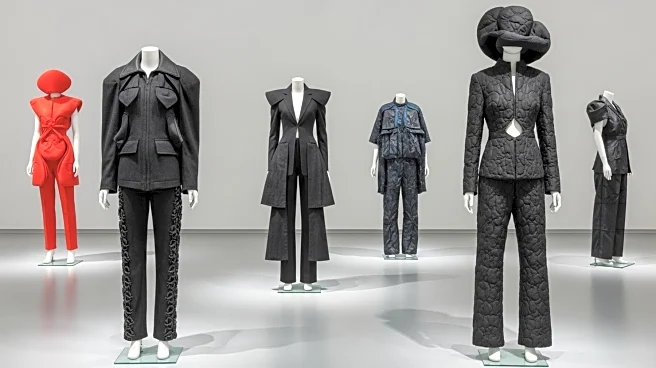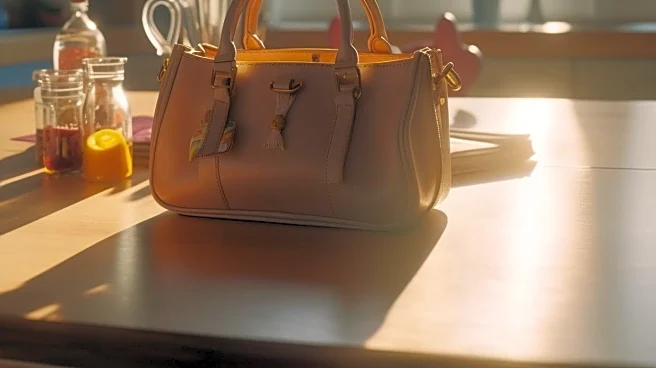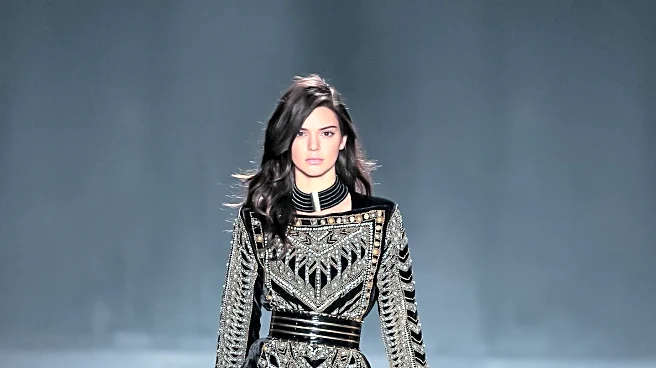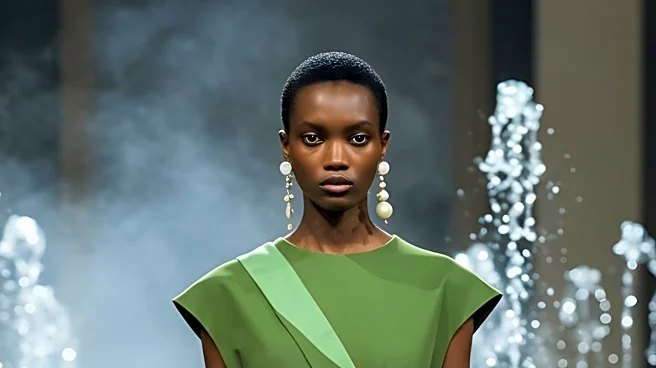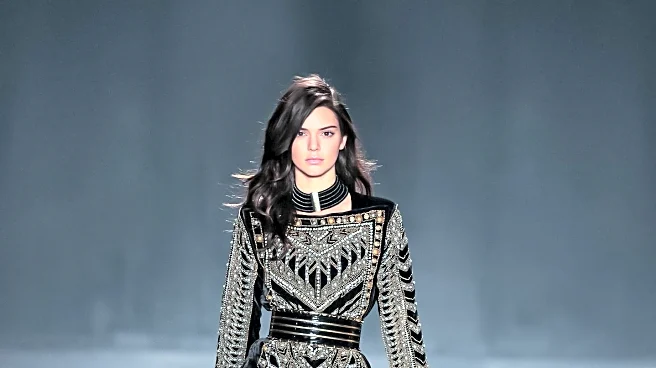What's Happening?
Vetements unveiled its Spring 2026 Ready-to-Wear collection, featuring a mix of provocative and innovative designs. The show, led by Guram Gvasalia, included elements such as 'No Swastika' T-shirts inspired by a recent incident near the brand's Swiss headquarters. The collection paid homage to Martin Margiela with the use of masks, though the intense strobe lighting posed challenges for models on the runway. The designs included open-back garments and denim with clear plastic, reflecting a blend of lingerie inspiration and upcycled fashion. The show also featured references to iconic fashion moments and personal histories of the designer and models, adding layers of complexity to the presentation.
Why It's Important?
The Vetements Spring 2026 collection highlights the ongoing trend of fashion as a medium for social commentary and personal expression. By incorporating controversial symbols and references, the collection challenges traditional fashion norms and provokes discussion on cultural and historical issues. This approach can influence the fashion industry by encouraging designers to explore bold themes and push creative boundaries. The collection's focus on upcycling and innovative design techniques also underscores the growing importance of sustainability in fashion, potentially impacting consumer preferences and industry practices.
What's Next?
Following the show, Vetements may face both praise and criticism for its daring approach. The fashion industry and consumers will likely engage in discussions about the ethical implications of using controversial symbols in fashion. The brand's commitment to sustainability and innovative design could inspire other designers to adopt similar practices. Additionally, the collection's reception may influence future collaborations and partnerships for Vetements, as well as its positioning in the global fashion market.
Beyond the Headlines
The Vetements show raises questions about the role of fashion in addressing social and political issues. By incorporating elements that reference personal histories and cultural symbols, the collection blurs the line between fashion and activism. This approach may lead to a broader conversation about the responsibilities of fashion designers in shaping public discourse and the potential for fashion to serve as a platform for social change.


